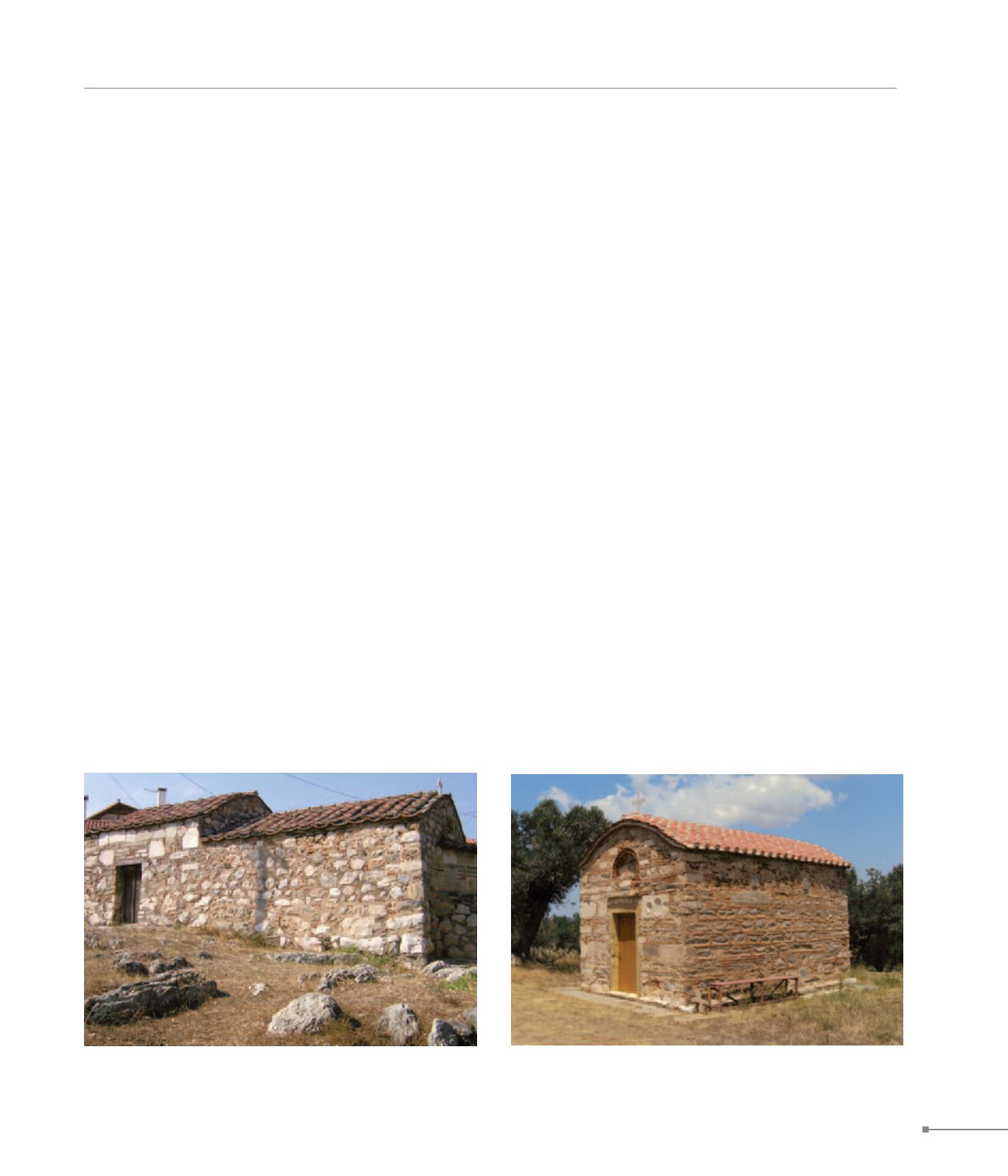
Aliveri.
Metochi, Karystos.
EUBOEA
171
186. Aliveri, Kokkine Ekklesia at Katakalos (Αλιβέρι, Κόκκινη Eκκλησιά
στον Κατακαλό)
186. Aliveri, Koimesis of the Theotokos (Αλιβέρι, Κοίμηση της Θεοτόκου)
186.
Aliveri.
In the city is a naiskos dedicated to the Koimesis of the The-
otokos (12th c.), aisleless, barrel-vaulted and with narthex. A
plethora of spolia is incorporated on its outer façades. The re-
markable wall-paintings decorating the interior are works of the
second half of the 14th c. On a rocky hill SE of the city stands an
important fortress known as Rizokastro (Protimo), associated
with two towers in the region, on the coast at Karavos and at Ve-
los. At Katakalos there survives on a hill the so-called Kokkine
Ekklesia (Aghios Demetrios), a small, aisleless barrel-vaulted
church of the late 14th c.
187.
Philagra.
Imposing ruins of the fortress of Philagra are still preserved,
accessible from the village of Giannitsi. The fortress was re-
nowned from the battles of the knight Licario and is identified
with Platari, appearing in literary sources. The fort of Anemopy-
lae, which is also mentioned in sources and is possibly identi-
fied with Philagra too, remains enigmatic. A little further N of
the fortress of Philagra lies the fortress of Armenoi, known by
various names and identified with the fortress of Styra. It is also
known as the fortress of Saint Nicholas. The original fortifica-
tion of the site dates from the Early Christian years, but it was
also used in the Byzantine period, prior to its eminence during
Frankish rule.
188.
Aghios Demetrios.
In the SW of the village of Aghios Demetrios, identified by some
researchers with the Byzantine settlement of Porphyra, is the
church of Aghios Demetrios, with traces of wall-paintings in its
interior. It dates from the late 13th or the early 14th c.
189.
Kalyvia, Karystos.
The Taxiarch is a complex, cross-in-square church with Atheni-
an dome and narthex. It was constructed in cloisonné masonry.
Of particular interest is its sculpted decoration with the morpho-
logically different and original imposts and the relief altar screen,
a large part of which survives intact. The church dates from
circa 1200 and displays remarkable similarities to churches on
neighbouring Andros. In its S part an aisleless, barrel-vaulted
chapel of Saint John Prodromos was subsequently added, and
features fragments of wall-paintings.
190.
Metochi, Karystos.
On the site where the monastery of Saint George “Mavros”
once stood, N of the village of Metochi in Karystos there was
originally a double church, i.e. two joined churches that did not
communicate with each other. Today only the S church sur-
vives, which was the monastery catholicon, as well as the ruins
of the N church. The S church is cross-vaulted and preserves a
dedicatory inscription in the interior, mentioning that it was built
in 1260 and dedicated to Saint George.


